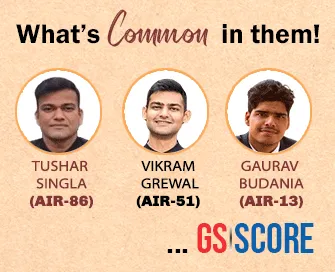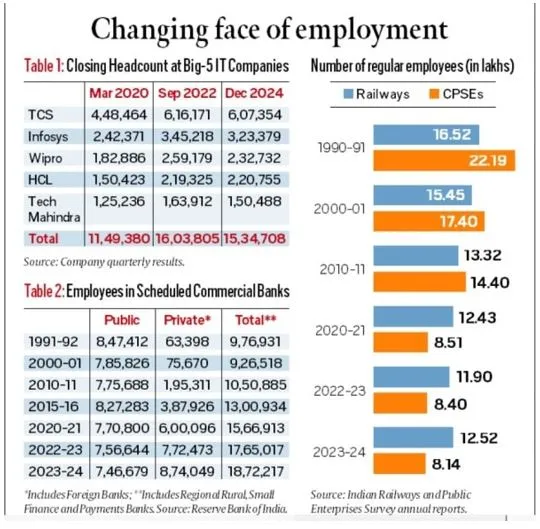

17th February 2025 (16 Topics)
Context
India’s middle class has undergone significant transformation since independence, especially in the post-reform era. A key factor in this shift has been the transition from public sector employment to the private sector, which has seen a major surge since economic reforms began in the 1990s.
Key Points:
- Public vs. Private Sector Employment:
- Public Sector:
- In 1995, public sector employment was 194.7 lakh (including central/state governments and public sector undertakings), compared to 6 lakh in the private sector.
- By 2012, public sector employment had decreased to 1 lakh, while private sector employment rose to 119.7 lakh.
- Post-2012, the shift towards the private sector has continued, though data from the Ministry of Labour & Employment is no longer published after 2011-12.
- Public Sector:

- Decline in Public Sector Jobs: The Indian Railways saw a sharp drop in regular employees, from 16.5 lakh in 1990-91 to just 11.9 lakh in 2022-23. Public Sector Enterprises also saw a reduction, from 22.2 lakh in 1990-91 to just 8.1 lakh in 2023-24.
- Growth of the IT Sector:
- IT companies like Tata Consultancy Services (TCS) and Infosys saw massive growth in employment.
- TCS: From 45,714 employees in 2004-05 to 4,48,464 in 2020.
- Infosys: From 36,750 employees in 2004-05 to 2,42,371 in 2020.
- The pandemic boosted the IT sector, leading to 16 lakh employees in the top five IT companies by 2022.
- IT companies like Tata Consultancy Services (TCS) and Infosys saw massive growth in employment.
- Banking Sector Transformation:
- Public sector banks employed about 8.5 lakh people in 1991, but this decreased to 7.7 lakh by 2020.
- Private sector banks now employ more people than their public counterparts. In 2023-24, private sector banks employed 8.74 lakh people, surpassing public sector banks with 7.5 lakh employees.
Challenges and Shifts in Employment:
- Private Sector-Led Middle Class 2.0: The rise of industries like IT, finance, and banking created a new middle class, while the public sector-led middle class shrank with economic reforms.
- Structural Employment Challenge: Unlike China, which experienced a shift from agriculture to manufacturing, India has struggled to transfer large numbers of workers from agriculture to higher productivity sectors.
- As of 2023-24, agriculture still accounts for 2% of the workforce, while manufacturing has stagnated at 11.4%. The services sector has grown, but many jobs are informal, low-paying, and non-permanent.
- Gig Economy and Informal Jobs: The gig economy has expanded, with companies like Uber and Swiggy employing millions of delivery partners and drivers. However, these jobs are often low-paying and do not offer stability or benefits typically associated with middle-class employment.

